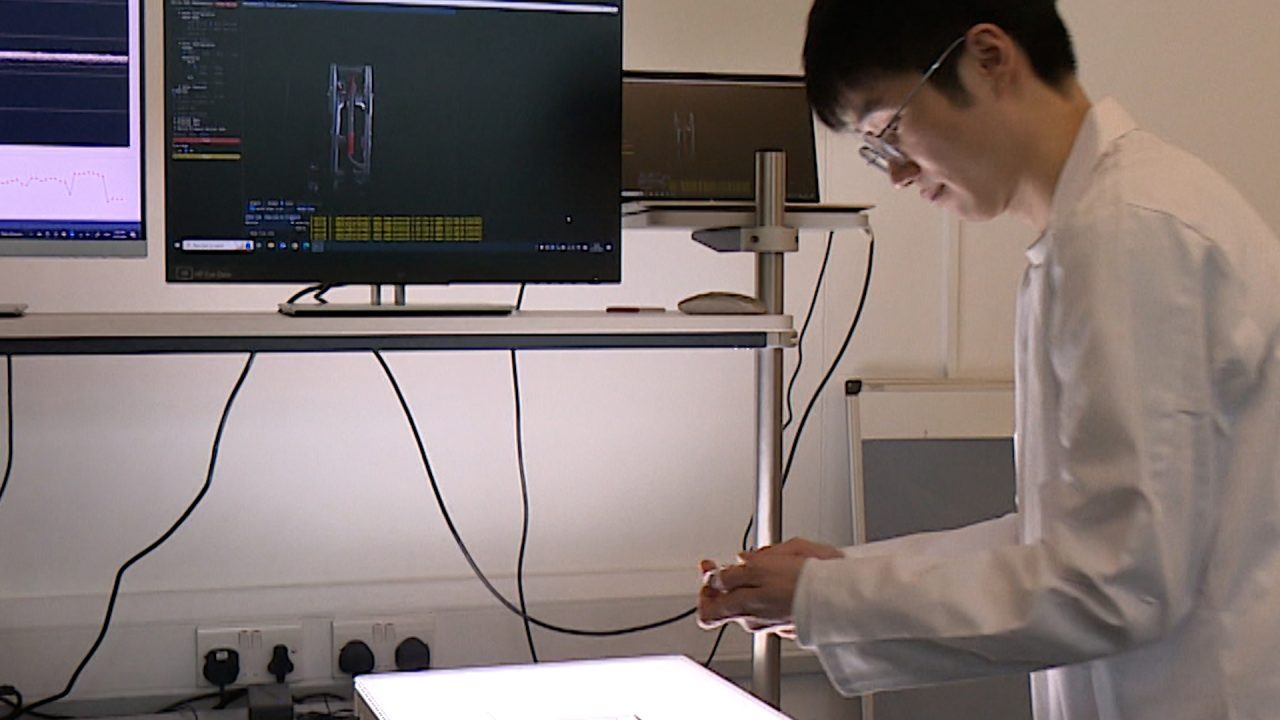Researchers at the University of Edinburgh are developing electronic skin, or e-skin, that mimics human touch.
The pioneering project hopes to improve a robot’s understanding of feel, movement and control in human skin, which could lead to progress in robotic surgery, artificial intelligence and prosthetics.
Developed in a lab, the stretchable e-skin is made out of material including silicon and is used on soft robots to provide them with a level of physical self-awareness similar to that of humans and animals.
Researchers believe this may offer safer and life-like interactions between humans and robots.
Dr Francesco Giorgio-Serchi, a lecturer in industrial robotics at the university, said: “It tries to basically remove the rigid design approach of traditional robotics.
“It removes the joints, removes the rigid links and tries to basically come up with robots which are effectively a continuum of soft material.
“It’s something that resembles our skin – so really flexible but can be worn on this structure and adjusted to.”
This technology could be used to aid people’s mobility or assist with surgical procedures by precisely detecting movement even in the most sensitive of surroundings.
Dr Yunjie Yang, lecturer at the school of engineering, said: “At the moment, this is at a prototype stage, but we are also looking at wearable devices that can enable us to build digital twins of human bodies that have a large application area in the metaverse.”
This skin is the first of its kind in the world – a step forward in making robots more life-like.
Dr Yang added: “We are leveraging this advantage of the team here within the school of engineering to develop cutting-edge technologies.”
The team tested the skin by fitting it to a soft robot arm and found that the technology was able to sense a range of complex bending, stretching and twisting movements across every part of the device.
Asked if robots were becoming more human-like, Dr Giorgio-Serchi said: “Certainly proprioception, which is one of the most difficult things to endow a robot with… this kind of technology is pushing in that direction.
“When we talk about proprioception, what we really mean is that ability for you and I to know where I am without actually having to look at myself.”
E-skin is evolving across the world. Last year, a team from the California Institute of Technology developed a type of skin that allows robots to sense temperature and even toxic chemicals.
In December, Cornell University engineers created a soft robot capable of detecting when and where it was damaged and healing itself on the spot.
Follow STV News on WhatsApp
Scan the QR code on your mobile device for all the latest news from around the country



























